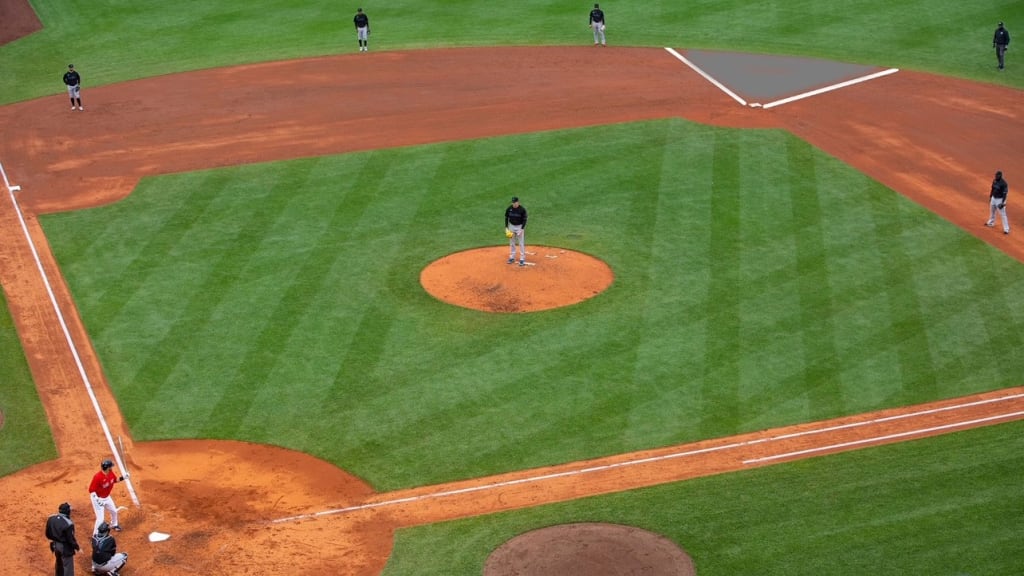
MLB will test out a new rule in the Minor Leagues to limit defensive shifts: adding chalk lines on the field extending from each side of second base toward the outfield grass, creating a pie slice-shaped region behind the bag where no infielders can play.
The experimental shift rule, which was first reported by The Athletic on Tuesday, will go into effect in the Single-A Florida State League starting July 22.
MLB has already been testing out shift rules across the Minor Leagues this season: one prohibiting infielders from playing on the outfield grass, and one requiring two infielders to be positioned on each side of second base.
This newest rule basically creates a bigger opening in the defense up the middle, which would theoretically generate more base hits through the middle.
Under the current shift rules in place in the Minors, a team can still station one middle infielder almost completely up the middle, deep behind the second-base bag, while the other middle infielder plays to the pull side in the location the batter is most likely to hit the ball.
For example, against a left-handed pull hitter, the second baseman could play deep on the pull side, near the outfield grass, while the shortstop plays at the same depth almost completely up the middle, but just to the left of the second-base bag. While not a traditional "shift," because the shortstop is still to the left side of second base, that positioning can still take away a lot of hits.
But with the new rule in the Florida State League, if the shortstop or second baseman wants to play up the middle, they have to play much shallower -- about 20 feet shallower than they might otherwise -- close to the bag. The "slice of pie" zone created by the chalk lines means that the deeper a middle infielder wants to play, the farther away from second base they have to go.
That would make it harder to field sharp ground balls up the middle. Essentially, a middle infielder would be able to play straight up the middle, or deep toward the outfield grass, but not both.
